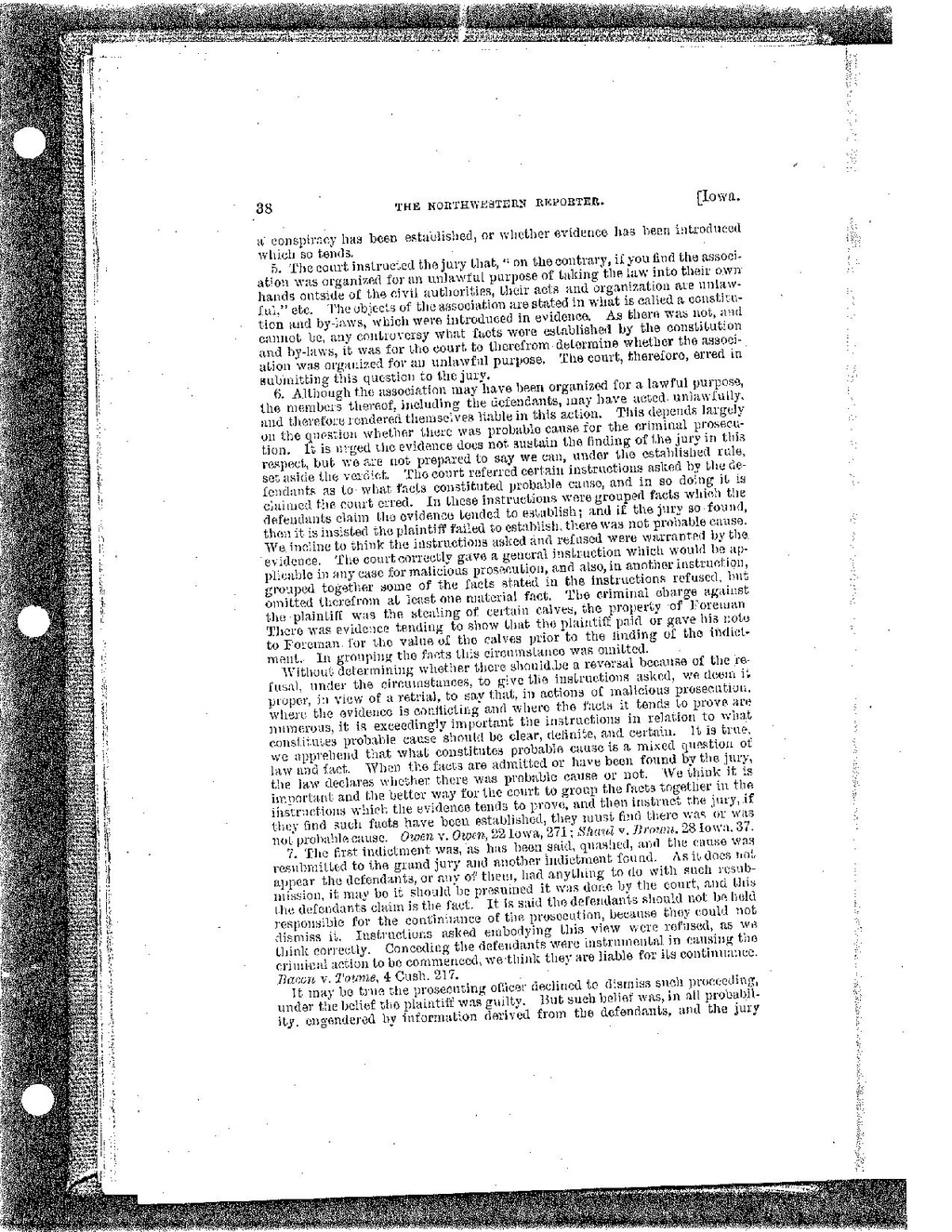a conspiracy has been established, or whether evidence. has been introduced which so tends.
5. The court instructed the jury that, “on the contrary, if you find the association was organized for an unlawful purpose of taking the law into their own hands outside of the civil authorities, their acts and organization are unlawful,” etc. The objects of the association are stated in what is called a constitution and by-laws, which were introduced in evidence. As there was not, and cannot be, any controversy what facts were established by the constitution and by-laws, it was for the court to therefrom determine whether the association was organized for an unlawful purpose. The court, therefore, erred in submitting this question to the jury.
6. Although the association may have been organized for a lawful purpose, the members thereof, including the defendants. may have acted. unlawfully. and therefore rendered themselves liable in this action. This depends largely on the question whether there was probable cause for the criminal prosecution. It is urged the evidence does not sustain the finding of the jury in this respect, but we are 11ot prepared to say we can, under the established rule, set aside the verdict. The court referred certain instructions asked by the defendants as to what facts constituted probable cause, and in so doing it is claimed the court erred. In these instructions were grouped facts which the defendents claim the evidence tended to establish; and if the jury so found, then it is insisted the plaintiff failed to establish, there was not probable cause. We incline to think the instructions asked and refused were warranted by the evidence. The court correctly gave a general instruction which would be applicable in any case for malicious prosecution, and also, in another instruction, grouped together some of the facts stated in the instructions refused, but omitted therefrom at least one material fact. The criminal charge against the plaintiff was the stealing of certain calves, the property of Foreman There was evidence tending to show that the plaintiff paid or gave his note to Foreman. for the value of the calves prior to the finding of the indictment. In grouping the facts this circumstance was omitted.
Without determining whether there should be a reversal because of the refusal, under the circumstances, to give the instructions asked, we deem it proper, in view of a retrial, to say that, in actions of malicious prosecution, where the evidence is conflicting and where the facts it tends to prove are numerous, it is exceedingly important the instructions in relation to what constitutes probable cause should be clear, definite, and certain. It is true, we apprehend that what constitutes probable cause is a. mixed question of law and fact. When the facts are admitted or have been found by the jury, the law declares whether there was probable cause or not. We think it is important and the better way for the court to group the facts together in the instructions which the evidence tends to prove, and then instruct the jury, it they find such facts have been established, they must find there was or was not probable cause. Owen v. Owen, 22 Iowa, 271; Shaul v. Brown. 28 Iowa, 37.
7. The first indictment was, "as has been said. quashed, and the cause was resubmitted to the grand jury and another indictment found. As it does not appear the defendants, or any of them, had anything to do with such resubmission, it may be it should be presumed it was "done by the court, and this the defendants claim is the fact. It is said the defendants should not be held responsible for the continuance of the prosecution, because they could not dismiss it. Instructions asked embodying this view were refused, as we think correctly. Conceding the defendants were instrumental. in causing the criminal action to be commenced, we think they are liable for its continuance. Bacon v. Towne, 4 Cush. 217.
It may be true the prosecuting officer declined to dismiss such proceeding, under the belief the plaintiff was guilty. But such belief was, in all probability, engendered by information derived from the defendants, and the jury
